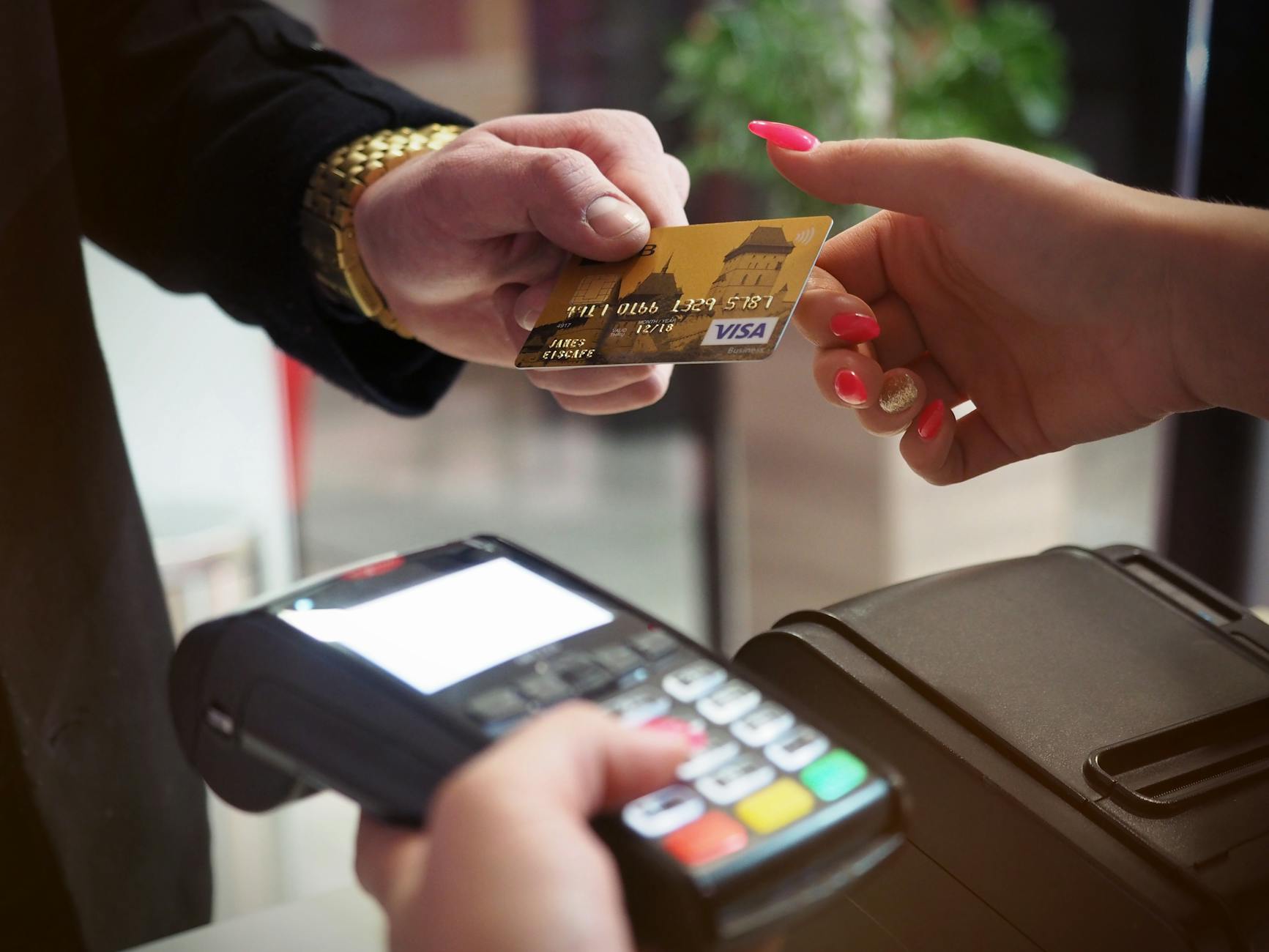Anúncios
Credit card rewards programs can seem complicated at first glance, but they don’t have to be. If you’ve ever daydreamed about using your everyday spending to score free travel, cash back, or special perks, you’re in the right spot. In this ultimate guide, you’ll learn what credit card rewards programs are, how they work, and how to pick and manage cards that suit your lifestyle without getting lost in the fine print. Let’s jump in.
Explore major reward types
Not all rewards are created equal. Each type has its own feel and potential payoffs. Understanding the basics helps you pick the card that fits your routine and goals.
Cash back
Cash back is the most straightforward type of reward—earn a percentage of your purchase back in actual dollars. Some cards offer a flat rate for everything, such as 1.5% or 2% on all purchases. Other cards provide boosted rates for select categories like groceries, gas, or dining out.
- You can often redeem your accumulated cash as a statement credit, direct deposit, or check.
- Watch out for spending caps or rotating categories that might require you to opt in to earn the higher rate.
- If you’d rather simplify everything and not think too much about where and how to earn top rewards, a flat-rate cash-back card can be a great starting point.
Points
Points-based programs typically offer diverse redemption options beyond cash, such as travel, gift cards, or even merchandise. If you’re someone who loves flexibility, points might be your jam.
- Points can be converted into a variety of rewards. Some programs let you transfer them to airline or hotel partners, while others allow statement credits or online store purchases.
- Pay close attention to how points convert to dollar values. Many programs peg each point to one cent, but others might shift that ratio.
- Some cards label themselves as cash-back cards but actually issue your rewards as points. When you redeem points for cash, each point might be worth a certain fraction of a cent.
Miles
Miles programs (often co-branded with airlines) revolve around collecting miles you can redeem for flights, seat upgrades, or other travel-related costs. This is perfect if you fly regularly or enjoy saving up for a vacation trip down the road.
- Miles typically accumulate in an airline loyalty account.
- Many airline cards offer higher mile-earning potential for flights and travel expenses, which can add up quickly if you’re a frequent flyer.
- The value of your miles may depend on where and how you redeem them—sometimes using miles for seat upgrades yields more value than it would for basic airfare.
Maximize your earnings
Earning rewards is fun, but you don’t want those perks overshadowed by interest charges or fees. Here are ways to get the most out of credit card rewards programs without letting hidden costs nibble away at your gains.
Pick the right card
Every card is designed with a particular spender in mind. If you’re more of a homebody who orders groceries online, look for cash-back cards with higher rates on groceries or food delivery. If you’re all about exploring new places, travel cards with robust airline or hotel partnerships may serve you best.
- Review your monthly statements to see where you spend the most.
- Match that spending pattern to the right card, so you earn extra rewards naturally.
Watch for sign-up bonuses
Sign-up bonuses can add a serious jumpstart to your rewards. For example, some providers promise several hundred dollars’ worth of rewards if you spend a stipulated amount within the first few months. Just avoid the temptation to overspend to unlock a bonus.
- Carefully note the time window—many require you to meet the spending requirement in the first three months.
- Resist running up a balance you can’t pay off quickly.
Pay in full
Carrying a balance from month to month means you pay interest, which can easily wipe out any rewards you earn. According to NerdWallet’s annual household debt report, nearly 40% of Americans with revolving credit card debt say they carry a balance partly to rack up rewards (NerdWallet’s annual household debt report). However, the typical interest rate (around 22.77%) often negates those benefits in less than half a year.
- If you can, aim to pay your balance off every month.
- Even if you can’t zero out the full balance, paying more than the credit card minimum payments helps reduce interest costs.
Use multiple cards
Sometimes, a single card isn’t enough to maximize your rewards. You might use a flat-rate card for everyday essentials while pulling out a second card that offers 5% back on rotating categories, such as gas or groceries.
- This approach requires a bit of strategy. Keep track of category limits and activation dates.
- Watch out for fees or complexities that might offset the extra earnings.
Consider bonus categories
Many credit card rewards programs spice things up with bonus categories. These categories, which change quarterly or remain constant, often earn 2 to 5 times the normal reward.
How rotating categories work
A rotating rewards card may require you to activate new categories every quarter. For instance, one quarter might feature gas and EV charging stations, while another quarterly period highlights online shopping.
- Stay updated on the official issuer site or app to see current categories.
- If you don’t activate, you’ll often miss out on those higher rates and default back to the card’s regular earning rate.
Activation reminders
Issuers will usually send a heads-up about categories. It’s easy to overlook activation emails in a busy inbox, so try setting a quick reminder on your phone or mark your calendar when new categories pop up.
- Most rotating bonus categories are capped at a certain spend limit. For example, once you hit $1,500 in that category, the card reverts to its base rate.
- Activating on time is key. Doing so even a week late could leave you without that quarter’s bonus rate for your early purchases.
Avoid pitfalls
Nobody wants the frustration of seeing hard-earned rewards vanish or get offset by hefty fees. Here are a few common traps to avoid.
Watch for interest and fees
High interest can quickly cancel out your perks. Late or missed payments might also mean incurring credit card late fees. Some premium cards that earn robust rewards also charge an annual fee—though if the perks outweigh the cost, it might still be worth it.
- Consider no-fee cards if you’re just starting out and prefer a lean option.
- For bigger perks of premium cards, it’s crucial to regularly weigh your usage against the credit card annual fees.
Beware of reward devaluations
Rewards program operators can change redemption rates, impose new terms, or remove certain redemption options. If you’ve been saving points for a big redemption, note that your points could drop in value if the issuer changes the conversion rate or discontinues a certain partnership.
- Keep an eye on card announcements. If a program is being devalued, many issuers share news a few months in advance.
- Redeem rewards earlier if you suspect a potential change is coming.
Compare reward structures
A quick glance at the pros and cons of each reward type can help you pick the right path. Here’s a handy table to guide your decision:
| Reward type | Pros | Cons | Best for |
|---|---|---|---|
| Cash back | Straightforward, easy redemption | May have limited redemption flexibility | Folks who value simplicity |
| Points | Flexible redemption options | Value can vary depending on how you redeem | People who shop widely |
| Miles | Ideal for travel enthusiasts | Restricted to specific airlines or travel | Frequent flyers or travelers |
(Image suggestion: A simple diagram showing how each reward flows from your purchase to redemption.)
Take key steps
Ready to make the most out of your credit card rewards programs? Let’s recap what you can do next.
- Pinpoint your top spending categories. Skim your recent statements, and identify where your money goes. This is the fastest way to find the card that’s tailored to you.
- Make a short list of potential cards. If you travel a lot, consider an airline co-branded card. If you love simplicity, a flat-rate cash-back card might be a perfect match.
- Check your credit. Most rewards cards prefer applicants with a credit score of at least 670, although requirements vary by issuer.
- Factor in interest and fees. Even a stellar rewards rate might not be worth it if you can’t pay your balance in full. Also verify any additional credit card fraud protection features you might need.
- Create a pay-off plan. If you already have debt, be strategic. Consider switching to cash or debit until you clear that balance. Once you’re free of debt, jump back in with credit cards for the rewards.
Final thoughts
Credit card rewards programs work best when you’re informed and in control of your spending. They can open doors to free flights, statement credits, or that extra cash buffer for life’s little surprises. Keep an eye on changing reward structures, pay your balance on time, and pick cards that truly match your spending habits. Before you know it, you’ll be redeeming the perks you’ve earned, minus the headaches. It’s all about finding that sweet spot where rewards complement your financial life—without overshadowing the basics of smart money management.
Enjoy the journey (and the rewards) ahead. You’ve got this!








